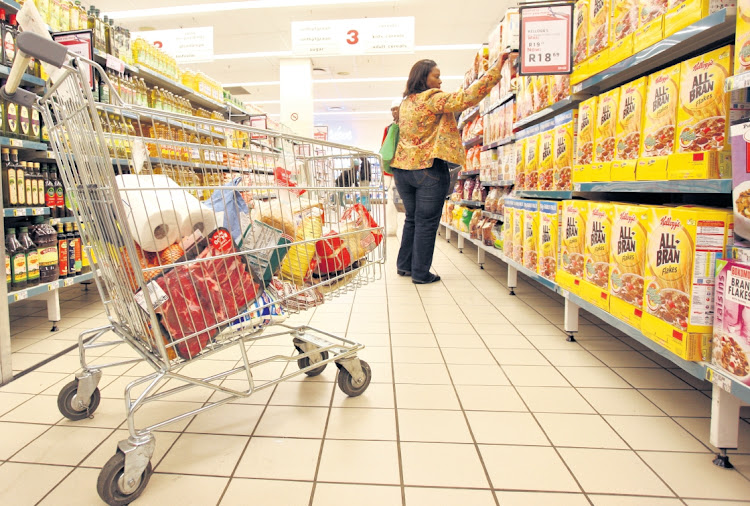Global agricultural commodity prices continue to moderate
12 April, 2023

By and large, global grains and oilseeds prices have continued to trend lower.
This follows the diplomatic interventions by UN representatives, the Turkish, Russian, and Ukrainian government counterparts to facilitate the safe passage of grain exports out of the Black Sea region through the Black Sea Grain Deal.
In March, the Food and Agriculture Organisation of the UN’s Global Food Price Index, a measure of the monthly change in international prices of a basket of agricultural commodities, was at 126.9 points, down by 2.1% from February.
This marked the 12th consecutive monthly decline since reaching its peak a year ago.
Notably, the index is down 21% from March 2022. This shows there is an improvement in the affordability of various agricultural commodity prices since their peak in the month after Russia invaded Ukraine.
This decline has been observed in most commodity prices across the board, which include meat, dairy, cereals, and vegetable oils.
The exception is for sugar prices which are up marginally from March 2022. The 2022/2023 global sugar-ending stocks are projected to tighten as growth in global consumption exceeds the rise in production.
While the downward trend in most global agricultural commodity prices will likely persist over the near term, they will probably not return to pre-Covid-19 levels. The global grain stocks are also expected to tighten as the production of some commodities has declined while consumption increases. This will support agricultural commodity prices to remain well above long-term levels.
For example, earlier in March 2023, the US department of agriculture (USDA) indicated in its World Agricultural Supply and Demand Estimates report that 2022/2023 global wheat production could reach 788-million tonnes, up by 1% from the February 2023 estimates and the previous season’s harvest.
The larger harvest is on the back of expected larger average yields in Russia, the US, Canada, Kazakhstan, China, Australia and the UK.
That said, the 2022/2023 global wheat stocks could decline by 1% from the previous season to 267-million tonnes because of solid consumption.
Moreover, the 2022/2023 global rice production is estimated at 509-million tonnes, up by 1% from February 2023 estimates and roughly the same level as the 2021/2022 harvest.
Because of solid consumption levels, the USDA now forecasts an 8% annual decline in global rice stocks, estimated at 173-million tonnes.
However, the maize and soybean monthly production picture is different. For example, the 2022/2023 global maize production is forecast at 1.15-billion tonnes, down by 0.3% from the February 2023 estimate and 6% less than the 2021/2022 season’s crop.
This is mainly due to an expected smaller crop in the US, Ukraine and EU.
Subsequently, the 2022/20 23 global maize stocks are forecast to dwindle by 3% from the prior season, estimated at 296-million tonnes.
Moreover, the 2022/2023 soybean production forecast was slashed by 2% from February due to a poor anticipated harvest in Argentina due to dry weather. Still, this is 5% up from the previous season.
The anticipated large soybean harvests in Brazil, Russia and China are expected to more than offset the expected production declines in the US, India, Argentina and Uruguay.
These deviations in crop expectations are a function of weather conditions and variations in the area planted from season to season.
Overall, I view the 2022/2023 global grains and oilseeds production season in a positive light.
The expected global production levels should be sufficient to provide relief from the soaring of grain and oilseed prices which was experienced in the weeks after the start of the Russia-Ukraine war.
Still, the tighter maize and rice stock levels are likely keep prices at reasonably higher levels than their long-term averages.
SA is part of the global agricultural market. Therefore, these anticipated price trends will invariably be transmitted to the domestic agricultural market.
In essence, this means that agricultural commodity prices will likely continue to soften from last year’s levels, though not to the extent of reaching pre-Covid-19 levels.
This producer price stickiness will be welcomed by grain and oilseed producers that still have to contend with input costs that are now edging lower, but still remain stubbornly high.
Therefore, we still expect the terms of trade in field crop production to remain positive in the short term.
The same cannot be said, however, for horticultural production where producer prices have not surged to the same extent (as those of field crops) to provide a much-needed buffer to high input and exporting costs.
The livestock subsector has also been taking a strain due to high feed costs.
Nonetheless, the latest field crop commodity bearish trend will somewhat provide a reprieve for the intensive livestock production systems and struggling households as consumer food price inflation gradually moderates.
Useful Links:
Source: www.heraldlive.co.za
TAG(s):
